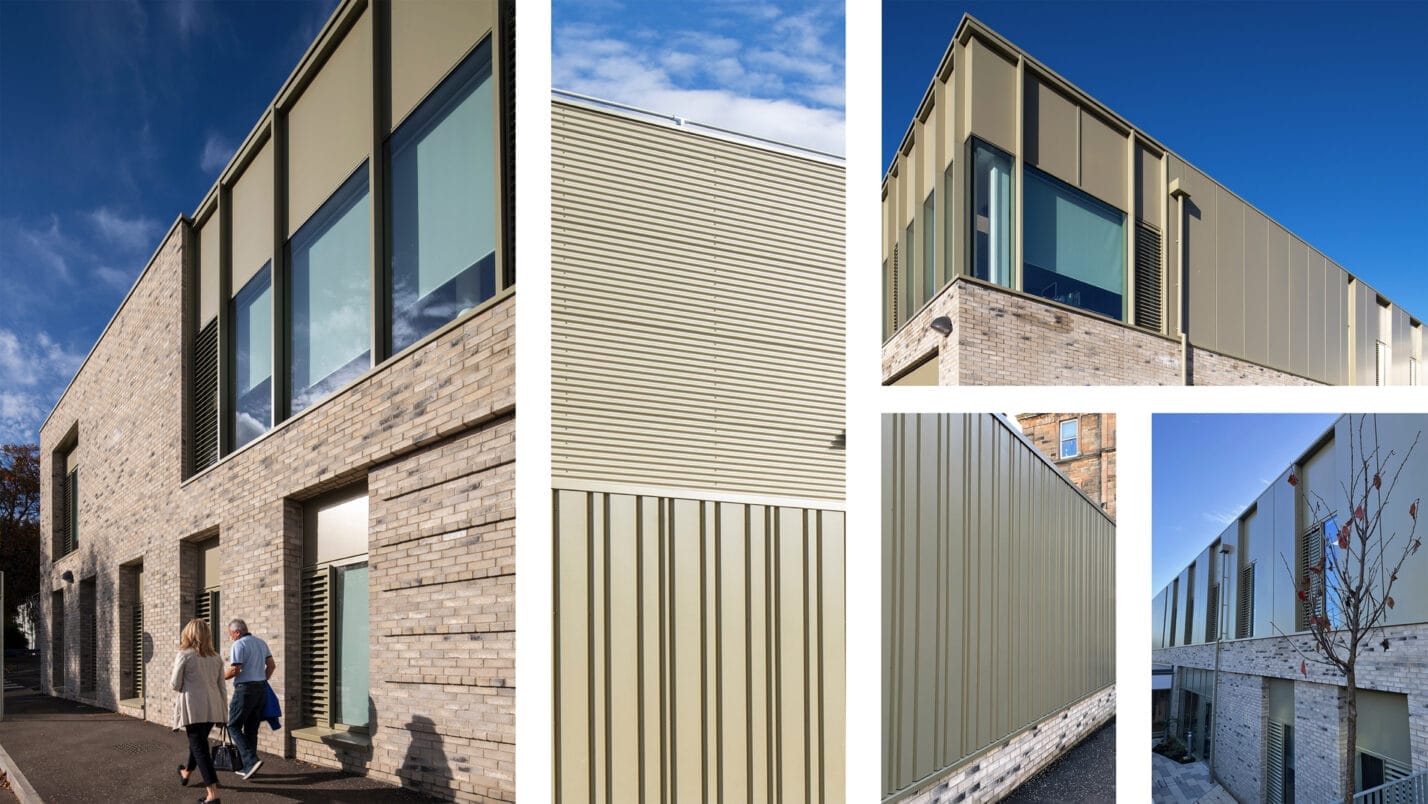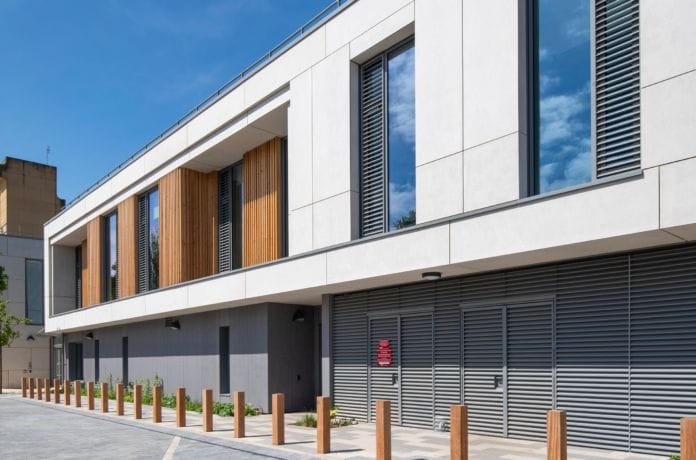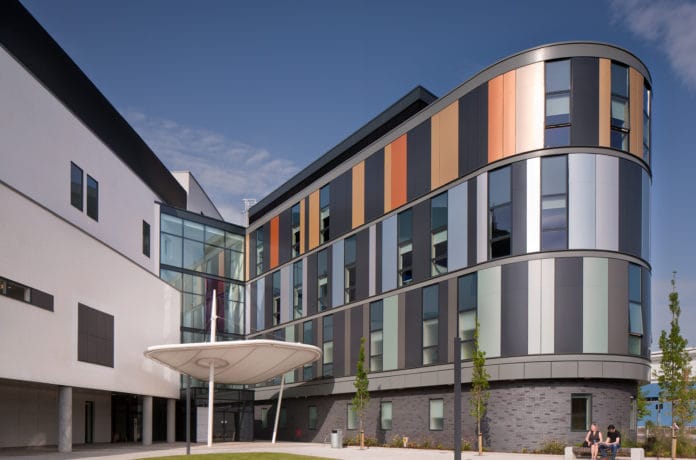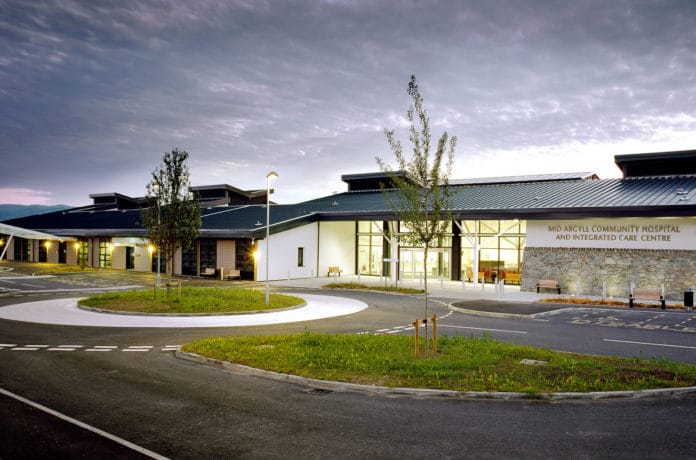
The new 1,800m2 linear accelerator (Linac) treatment facility for NHS Lothian houses radiation-shielded bunkers, a cancer assessment unit and oncology administration offices.
Design Approach
The design approach sought to remove the clinical feel of the building as much as possible, while still providing a compliant healthcare facility, in order to reduce patient anxiety while being cared for, or receiving treatment within the service.
The project has been delivered within a live hospital environment, and physically links to the existing radiotherapy department, to enable inpatients to be transferred between areas. The specialist design has ensured the project could be delivered without disruption to any of NHS Lothian’s clinical services on the site, retaining ambulance access to the adjacent departments and buildings. This was achieved through close liaison with key stakeholders to ensure the works were properly planned and phased to integrate with infrastructure works and other building works that were being run concurrently.
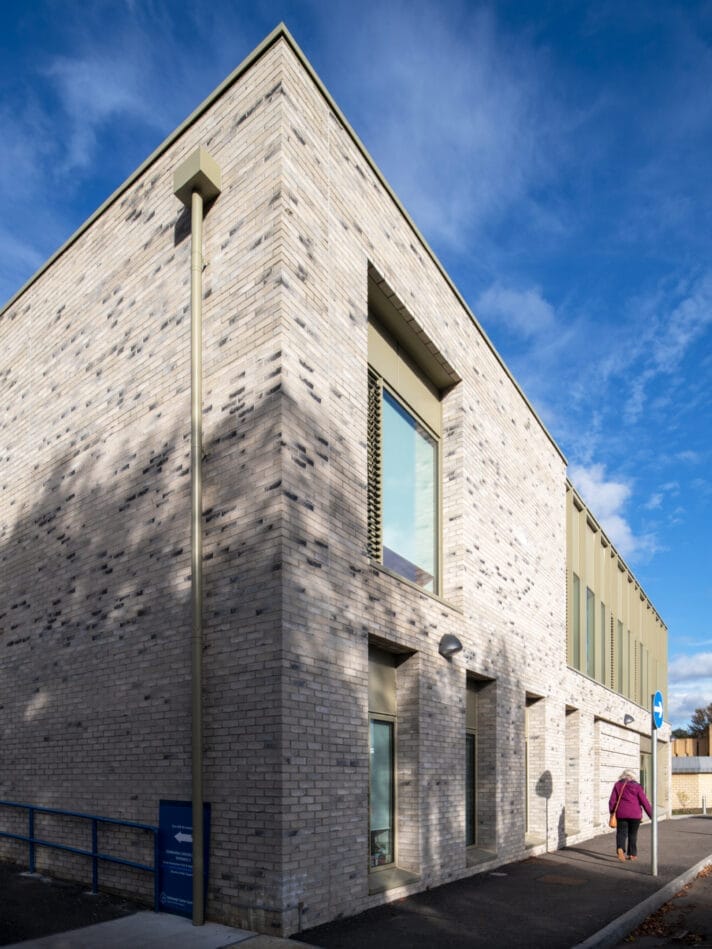

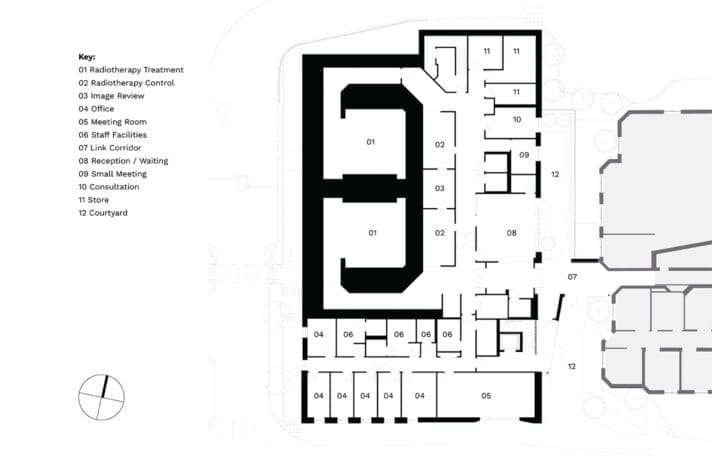
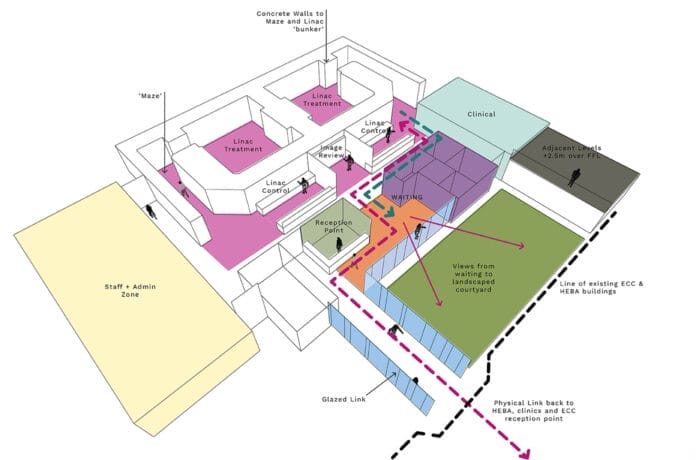


The design of the building exploits the topography of the site.
The heavy mass of the concrete radiation shielded bunkers are dug into the rear of the sloping site, with supporting service spaces also located to the rear (north) partially below ground level. These clinical spaces are surrounded by supporting staff and admin areas (to the south and east) with views out (southwards) to the street and east to a new shared landscaped courtyard. Likewise on the upper level, the plant is located directly above the bunkers (to the rear of the site) with supporting office accommodation wrapping around the south and east, to maximise natural light, and views out.


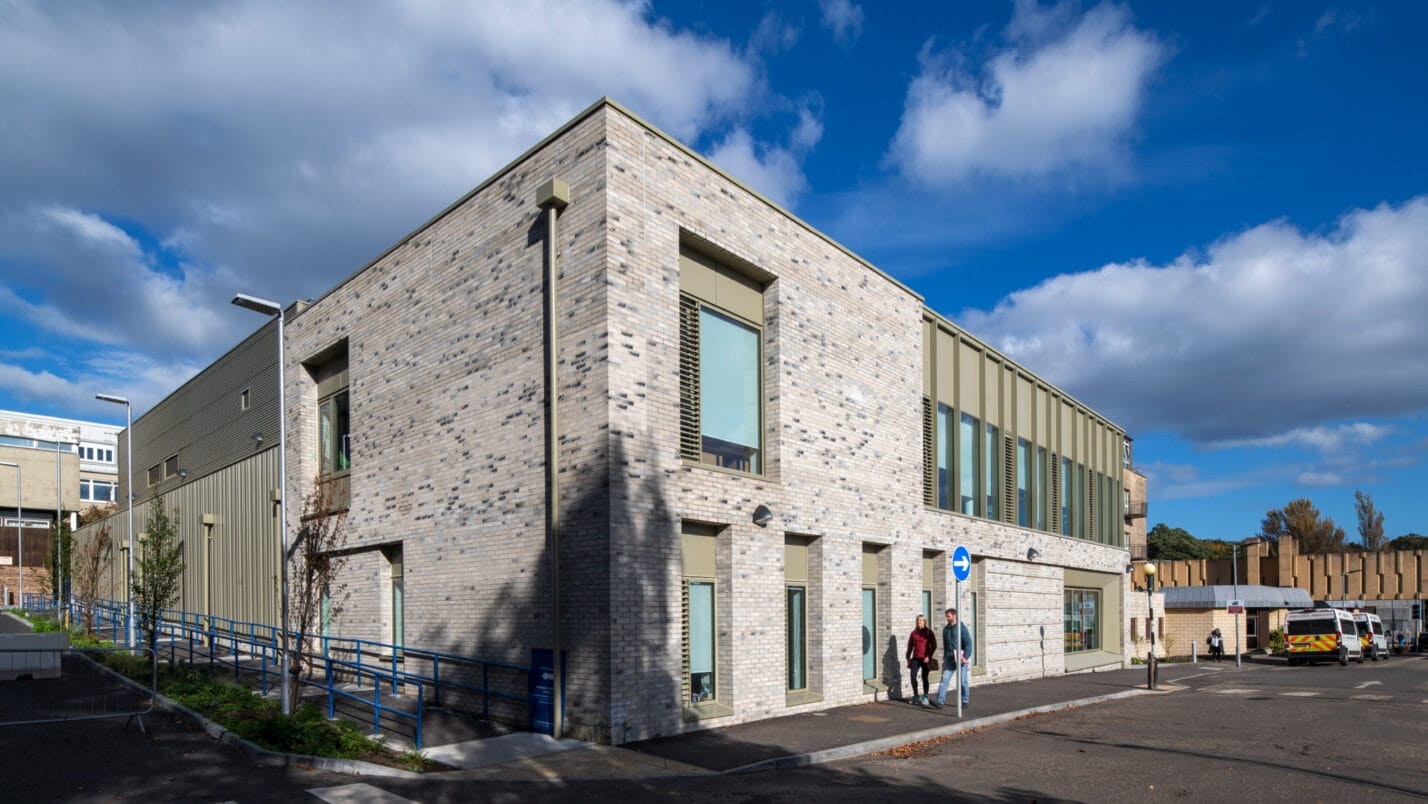
Externally, the building is conceived as 2 elements: an “L” shaped administration block wrapping around (and supporting) the more introverted nature of the treatment bunkers and associated plant above.
Similarly, the elevational treatment is conceived as a solid base (or plinth), reflecting the nature of the primary function at ground level, and referencing the solidity of the surrounding buildings, with the upper (admin) level expressed as a lighter volume. The solid treatment of the plinth steps up to the west to provide a 2 storey bookend on the corner, to visually contain both the bunker element (to the rear) and the supporting “L” shaped administration element returning along the south.
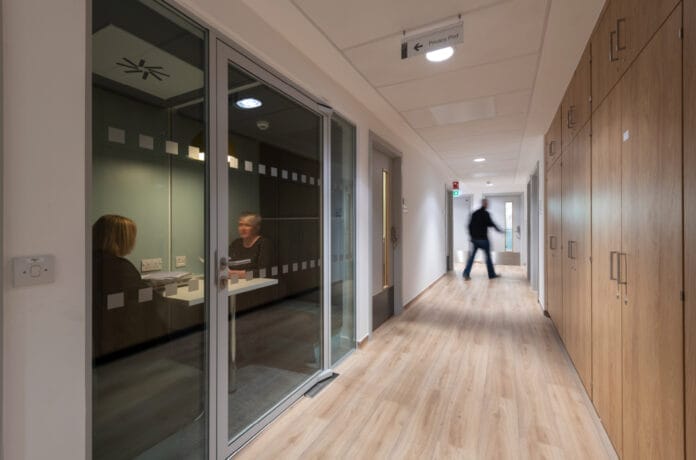

The materials palette is kept simple and robust.
A buff brick has primarily been used for the “L” shaped plan administrative function of the building to reinforce the solidity of the plinth and reflect the various tones of the adjacent buildings, whilst the “introverted” bunker is clad in a profiled aluminium sheeting to create a counterpoint to the solidity of the brick, and to add some texture to the otherwise blank façade.
